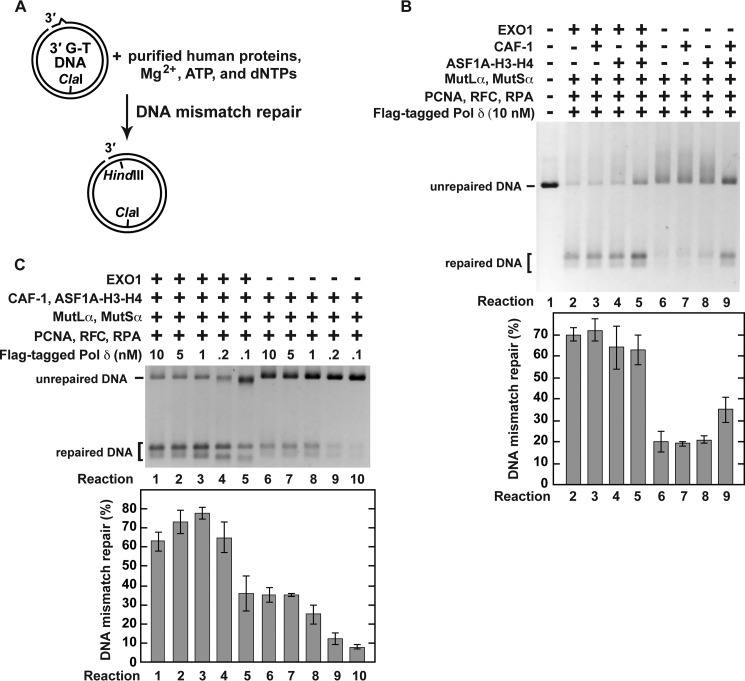FIGURE 4.
Pol δ-dependent MMR reactions that occur in the presence of CAF-1-, ASF1A-H3-H4-, PCNA-, and RFC-dependent histone (H3-H4)2 tetramer deposition. The data were obtained using the MMR assay (“Experimental Procedures”). The reaction mixtures contained the indicated proteins and DNA substrate (0.6 nm). When ASF1A-H3-H4, CAF-1, EXO1, MutLα, MutSα, PCNA, RFC, and RPA were present in the reaction mixtures, their concentrations were 46, 23, 3, 6, 22, 21, 3, and 52 nm, respectively. After incubation at 37 °C for 20 min, the reactions were stopped. DNAs recovered from the reaction mixtures were cleaved with HindIII and ClaI, and the cleavage products separated on a native 1% agarose gel were visualized with ethidium bromide staining. A, outline of the MMR assay. B, MMR products that were formed in the indicated reconstituted reactions. Note that the DNA products that were generated in the reconstituted reactions included those that moved in the gel slower than the unrepaired DNA. These slower moving products are MMR reaction intermediates that were formed as a result of strand-displacement syntheses initiated by Pol δ from both the original 3′ end and MutLα endonuclease-generated 3′ ends. C, effects of the different concentrations of Pol δ on the efficiencies of the excision-dependent and excision-independent MMR reactions. The data shown in the graphs are the averages ± 1 S.D. (n = 3) and were obtained by quantification of images including those in the figure.

